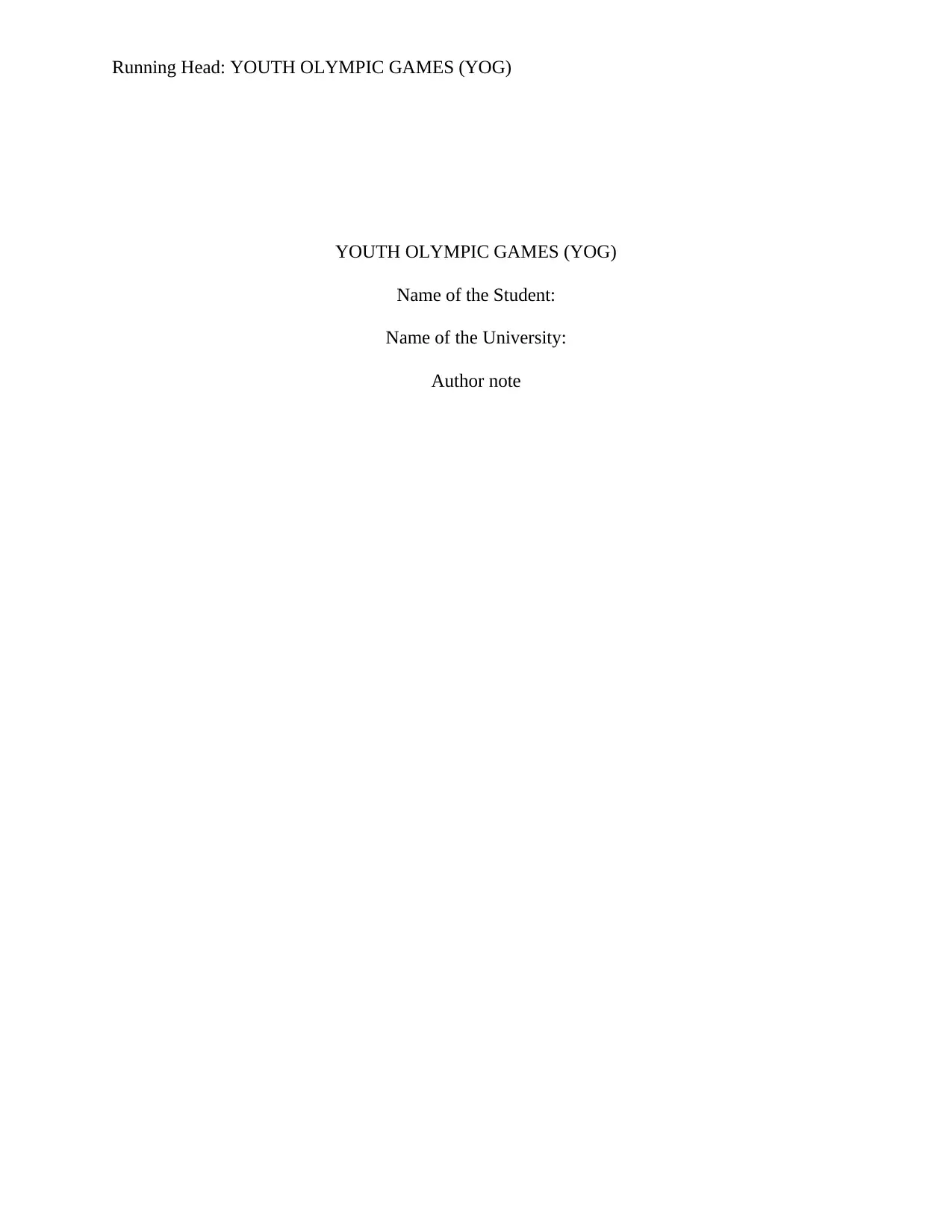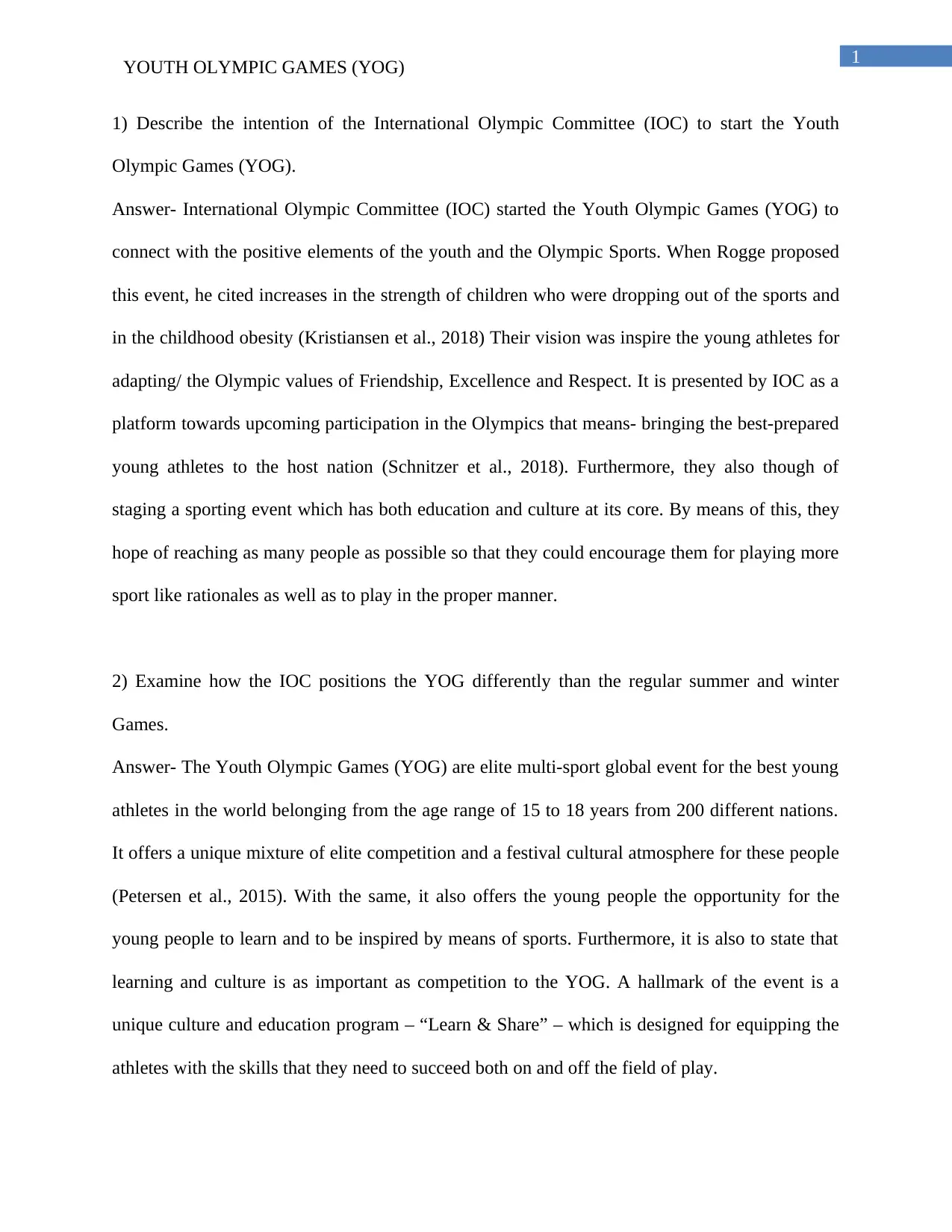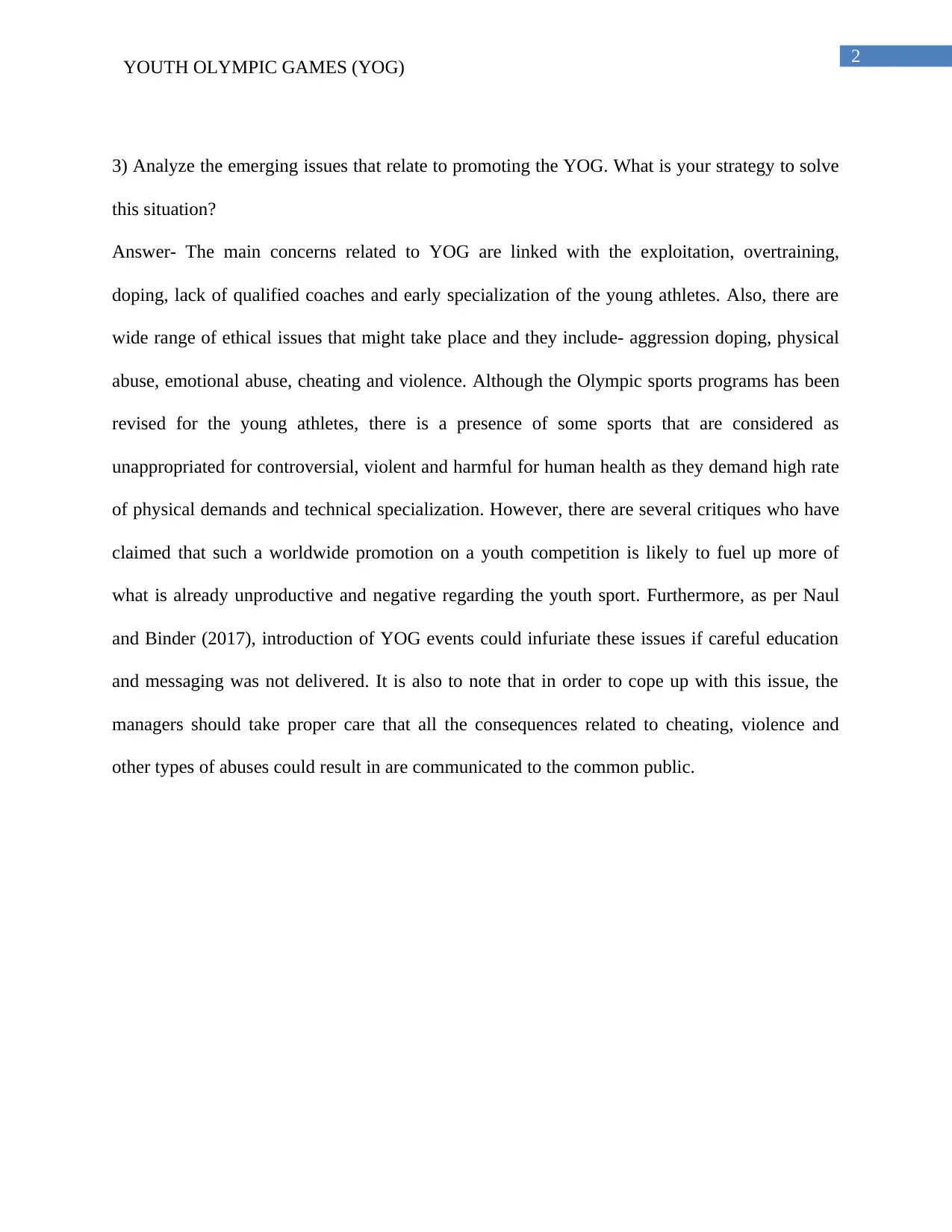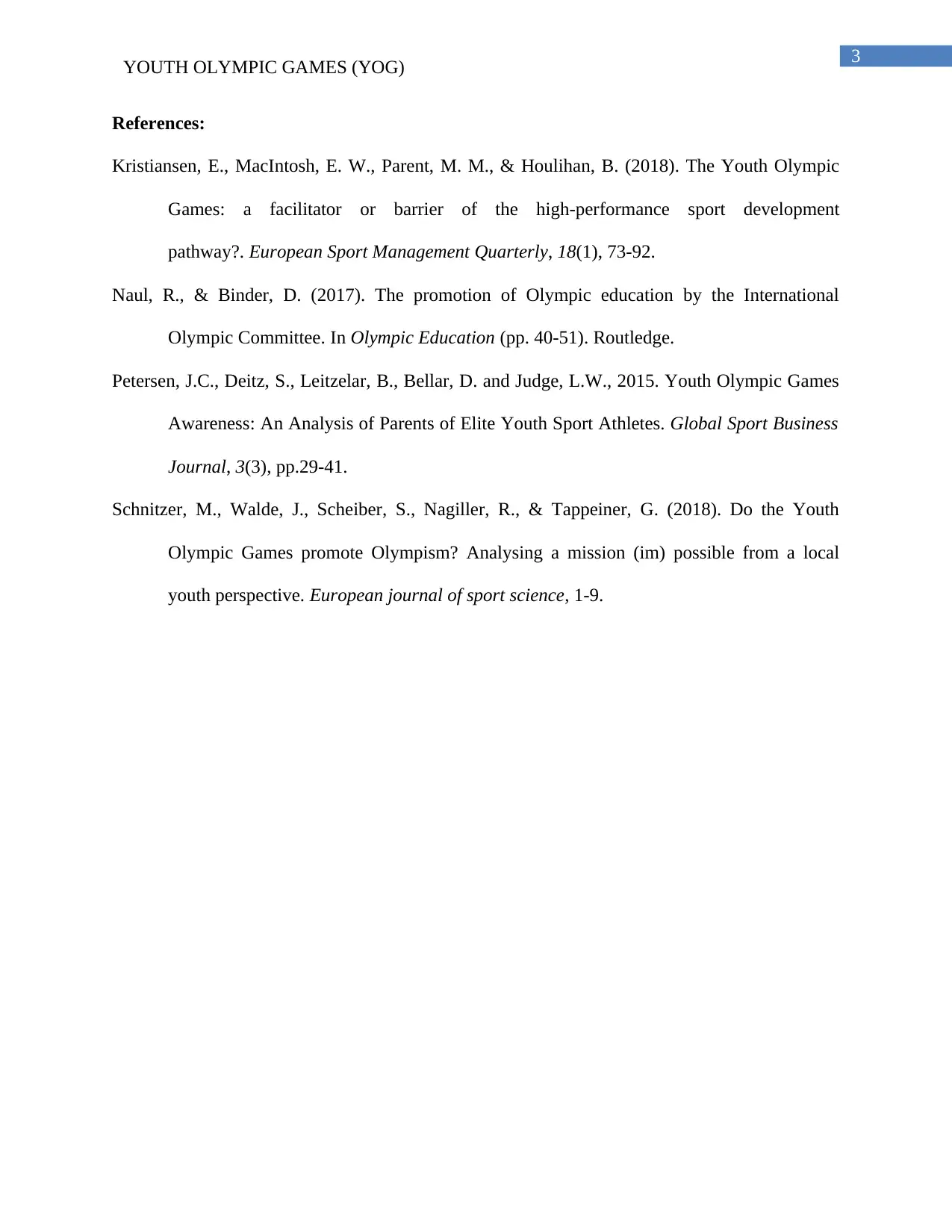SPT 565 Module Seven: Youth Olympic Games Analysis
VerifiedAdded on 2023/06/03
|4
|834
|280
Report
AI Summary
This report analyzes the Youth Olympic Games (YOG), addressing the International Olympic Committee's (IOC) intentions behind its inception, which included connecting with youth, promoting Olympic values of Friendship, Excellence, and Respect, and addressing issues like childhood obesity and declining sports participation among youth. The report examines how the IOC positions the YOG differently from the regular Summer and Winter Games, emphasizing its unique blend of elite competition and cultural atmosphere, along with the 'Learn & Share' program for athlete development. Furthermore, the report analyzes the emerging issues related to promoting the YOG, such as exploitation, overtraining, doping, and ethical concerns like aggression and abuse, and proposes strategies to mitigate these issues by communicating the consequences of unethical behaviors and emphasizing proper education and messaging. The report uses cited sources to support its analysis and conclusions.
1 out of 4








![[object Object]](/_next/static/media/star-bottom.7253800d.svg)